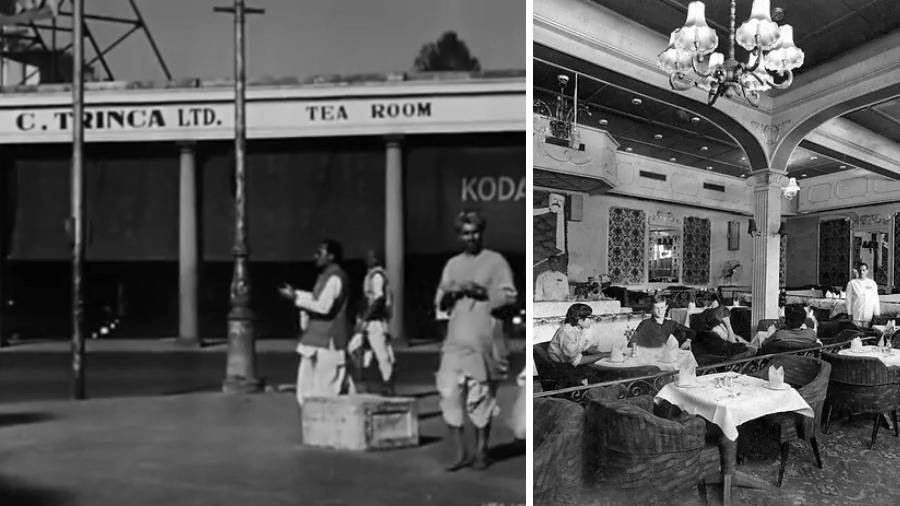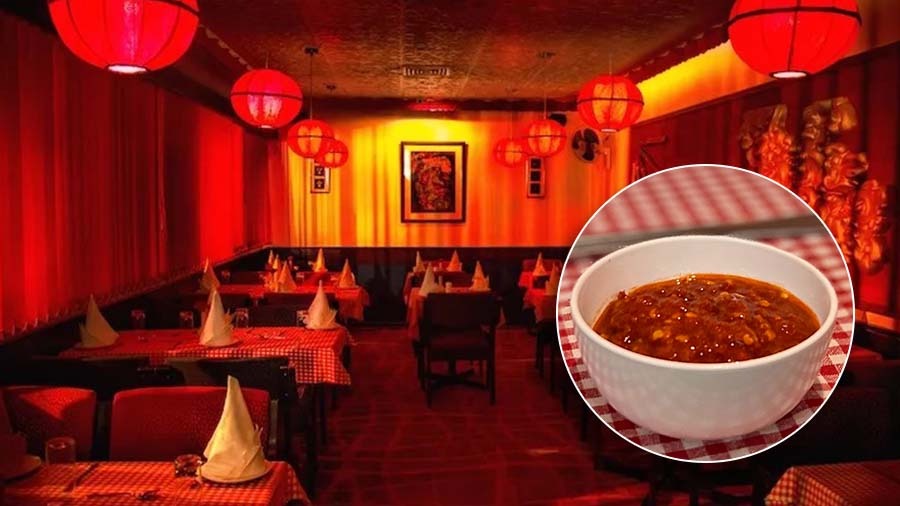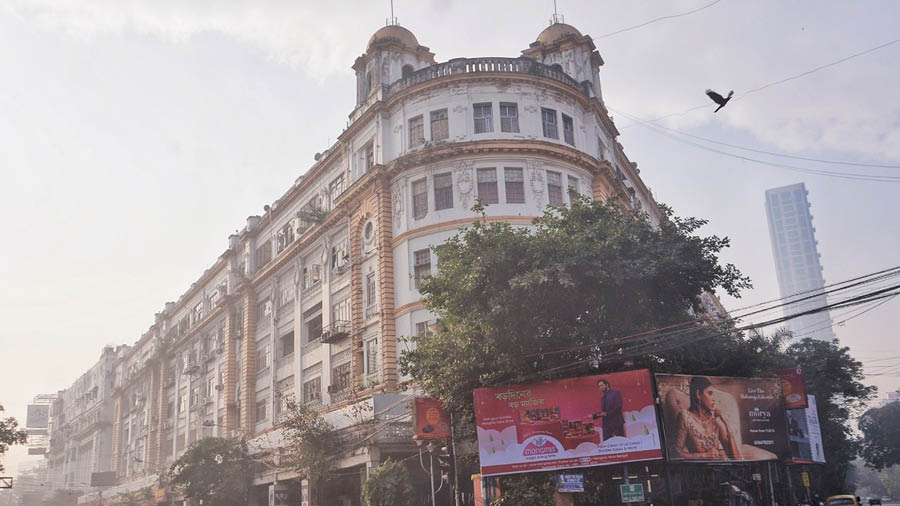It’s December 1939. A honey-coloured sun is inching into view over Park Mansions to the east. Cinzio Trinca stands at the corner of Russell and Park Street as a horse-drawn buggy clops by. It’s on its way towards the centre of town, likely the shops on Esplanade or The Great Eastern Hotel.
Trinca crosses the freshly-washed street from Galstaun Mansions (to be renamed Queen’s Mansions in another 14 years) to his newly-established bakery at 17 Park Street. It stands clean and white under a pillared portico. The lettering in black stands starkly against the outer edifice “Swiss Confectioner C. Trinca Ltd Tea Room”.
Only months ago, he would have been walking towards a similarly named confectionery, one that he ran successfully for 12 years with his friend and compatriot Joseph Flury.
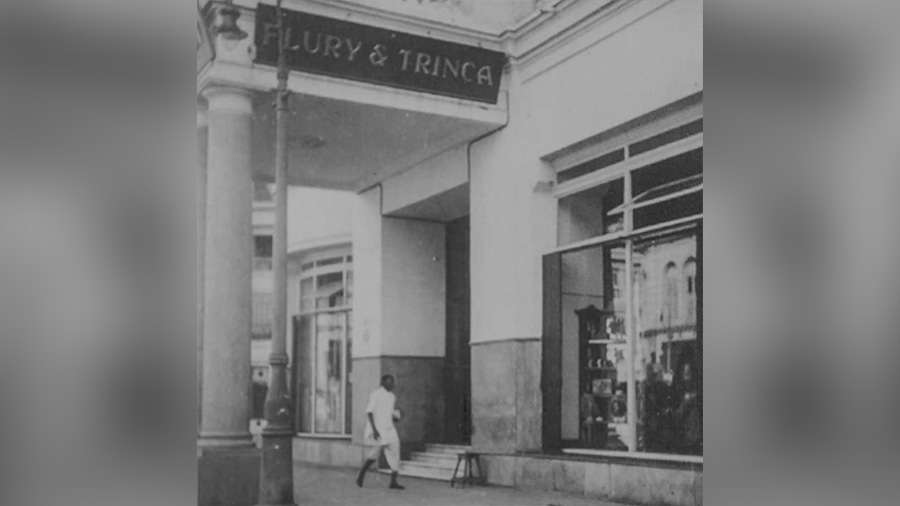
Cinzio Trinca ran a Swiss confectionery — Flury & Trinca — with Joseph Flury from 1927 to 1939
He steps through the double doors, one of glass — to keep out the cold in winter, and the other of mesh — to keep out the flies in summer, and enters the high-ceilinged dining room.
Crisply laid tables greet him — white tablecloths, starched and pressed, cutlery gleaming. A silver-plated urn stands sentry in a corner next to a stack of ivory-coloured porcelain cups. A waiter bustles about bringing in steaming water in an enormous kettle; another is wiping down an accidental smudge of vanilla icing on the display case.
The long glass display cases run almost the entire length of the room along the back wall – 40 feet in all! They parallel Park Street from east to west and have been freshly stocked with patties, mince pies, fresh bread, biscuits, butter croissants, delicate pastries and layered cakes.
A door in the back of the room leads down a wide service corridor, past the large laundry room on the left and on into the buildings that house the storage shelves and kneading tables and the newly-made ovens of the bakery.

A photograph of Park Street from the year 1940, can you spot Trincas?
The door swings open to accommodate a trolley laden with teapots and neatly portioned saucers of butter. On the other side of the hall, the front door opens and the morning's first customer walks in. The cold breeze outside mingles with the warm breath of the kitchen. The smells of 6 AM on a Calcutta winter morning paint a particular picture for the Swiss-born Trinca.
This is a perfume with a palette of its own. There is fresh green from wet dew on maidan grass. It blends with the acrid orange of leaves burning in neatly swept piles. Swirls of wood-smoke-brown and coal-smoke-grey add themselves in; busy bakery ovens must eat too! Above this all, is a gentle waft of soft yellows and pale beiges — buttery patties and warm bread loaves, and a sprinkle of red cinnamon, cloves and nutmeg from festive cakes soaked in rum. The morning, in a word, smells of comfort… and comfort is a memory… of something good…. that connects people and places… across time and space.
----------
Cut forward 30 years... It’s a purple December 1969 and the pre-dawn glow indicates 5 AM. Swaran Puri walks past a still-sleeping Kwality; slightly musty, bookish Oxford; the gleaming Kodak shop; and staunch Saheb Singh Chemists. She crosses Park Hotel’s driveway and passes Alijoo, the mysteriously empty shop with the Persian rugs. Finally, she arrives at the wooden façade of Trincas’ locked front door.
Ten years have flown by since she, her husband and their partner Josh bought Cinzio Trinca’s confectionery business. A lot has happened since then. An entire building has risen above and behind the Tearoom. While the main hall and kitchen remained the same, the old bakery buildings in the back were demolished to make way for the looming bulk of brick and mortar. All the open grassy spaces around the pucca kitchen sheds in the back were built upon with steel and concrete, and a smaller, more compact bakery folded into the restaurant's kitchen. Without demolishing the old structures in the back, the new hotel could never have been built.
The recently refurbished Trincas itself is magnificent. Air conditioning was added in 1960. The train of display cases of the old tea-room was shortened. Only a small portion of it remains in a corner section. The back wall now hosts a padded velvet stage and the tiled floor is covered in thick carpet. The prim, wood-and-rattan chairs and elegant tables of the tearoom have been replaced with comfortable, low-slung furniture very much in vogue these days. The restaurant now has a glass frontage looking out onto the street. It feels like a Chicago jazz club met a Parisian cafe but on the other side of the world!

Trincas maintains the crisply laid tables — white tablecloths, starched and pressed, cutlery gleaming — of 1939, even in 2022.
Swarni, as she’s called, is used to 5 AMs by now. Her husband Omi works all evening and into the night. She manages the mornings, supervising, taking stock and organising for the evening. It’s a hard-working life, but it's good to have some control.
She unlocks the front door, hearing the chatter and bustle of the bakery staff as they arrive through the back entrance to begin their day. Last night’s final batch of milk bread has cooled and is ready to be sliced. It will be the first thing to sell out as customers arrive early to stock their breakfast tables.
The restaurant smells of cigarettes and conversation, fading cologne, food on sizzling platters that are charred at the edges and a night well-lived. Soon there will be an overlay of dark coffee and that cocoa-y smell of beautiful chocolate figurines. Flaky palmier biscuits taste and smell like melting butter, almond cheesecakes have soft vanilla noses. There are cream filled éclairs wafting airy, and a salty tang from cheese straws balance the golden smell of Trincas’ now famous patties.
In 10 more years, the Trincas bakery will close. No one could possibly foresee that quiet ending. Officially mandated price controls, heavy labour demands and a proliferation of newly arrived competition will force the hand that’s been feeding the many.
But for now… it’s 1969, there’s a nip in the air, and the smells of comfort mingle with those of beautiful life. The combination couldn’t be more heady!
--------------------------------
It’s 9 AM on a December morning in 2039.
An old-fashioned Ambassador glides down Park Street on an air cushion. Green canopies of leaves sprout from hydroponic balconies and terraces overlooking the street and soft golden sunlight sprinkles onto the smooth road below. Migratory birds in exotic hues warble, tweet and sing in branches over the happy chatter of people walking down the peaceful avenue.
The air-car stops in front of a wooden facade on Park Street as its passenger takes a deep breath...
... and the rest of this story will have to be written in good time!
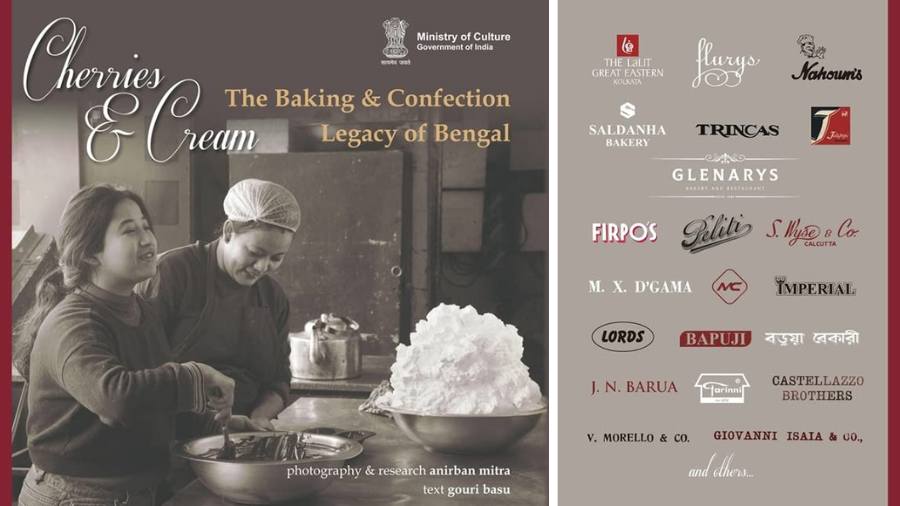
This story was first published in ‘Cherries & Cream: The Baking & Confection Legacy of Bengal’ and then as part of the Trincas Timeline Project — a community-based memory project run by Anand Puri, the third-generation owner of Trincas who aims at collecting stories, photos, and anecdotes going back almost a hundred years. Trincas Timeline Project aims to cover not just Trincas’ storied history, but also provide glimpses of ‘the Park Street Scene’ and Calcutta/Kolkata as it has evolved over the last century.
